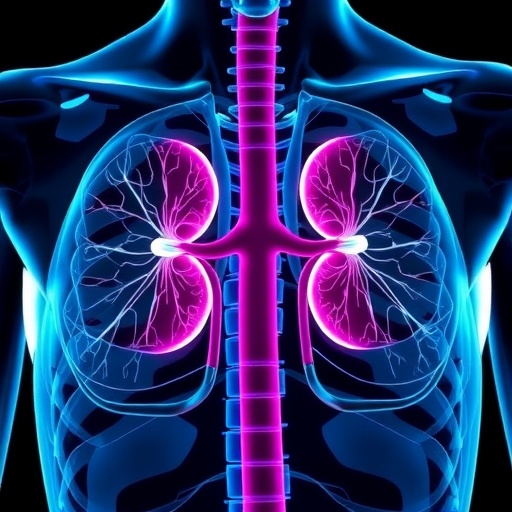In a groundbreaking new study published in Nature Communications, researchers have unveiled a novel approach to deciphering the complex phenotypic landscape of kidney transplant rejection. Driven by the urgent need to improve patient outcomes after transplantation, this research introduces continuous indices capable of capturing the subtle gradations that characterize immune responses against transplanted organs. By moving beyond traditional categorical diagnoses, these indices promise to transform how clinicians assess rejection, opening the door to more precise and personalized interventions.
Kidney transplantation remains the gold standard therapy for patients with end-stage renal disease, providing significant improvements in quality of life and survival. However, long-term graft survival is often jeopardized by immune-mediated rejection, a process where the recipient’s immune system mounts an attack against the transplanted kidney. Understanding and managing this phenomenon has been an enduring challenge, largely due to the heterogeneous nature of rejection phenotypes and the limited resolution of existing diagnostic tools.
Conventionally, kidney transplant rejection is classified into several discrete categories, such as T cell-mediated rejection and antibody-mediated rejection, determined through histopathological analysis of biopsy samples. While this framework has guided clinical decision-making for decades, it inherently simplifies a highly complex biological process into rigid groups. The new study starkly critiques this paradigm, emphasizing the continuum of phenotypic manifestations that extend across and within current categories.
The authors harness advanced computational techniques combined with high-dimensional molecular and histological data to construct continuous indices. These indices quantitatively characterize the spectrum of phenotypic traits observed in transplanted kidneys, capturing both immune and non-immune processes that occur during rejection. This approach acknowledges that the immune response is not a binary event but fluctuates dynamically over time and across cellular populations within the graft.
Central to their methodology is the integration of large-scale transcriptomic data with detailed pathological features from biopsy samples. By applying sophisticated machine learning models, the research team was able to deconvolute complex gene expression signatures that correlate with immune activation, tissue injury, and repair processes. These profiles are then distilled into continuous measures reflecting the intensity and nature of rejection activity in a given sample.
This continuous approach has several profound clinical implications. It enables the detection of early and subclinical rejection episodes that might be missed using traditional histological scoring. Moreover, it offers the potential to monitor the efficacy of immunosuppressive therapies in real-time, allowing for adaptive treatment adjustments tailored to the unique immune landscape of each patient. Such precision medicine strategies could ultimately reduce unnecessary drug toxicity while preserving graft function.
Further, the study underscores the heterogeneity within rejection subtypes. By mapping the phenotypic continuum, subtle overlaps and transitions between categories become visible, challenging the rigid boundaries imposed by current classification systems. This nuanced understanding is essential, as it may explain why some patients respond differently to standard treatments and why certain rejection patterns carry varying prognostic implications.
Importantly, the researchers validated these continuous indices across independent cohorts and diverse transplant centers, underscoring their robustness and potential for widespread clinical adoption. The scalability of this approach, combined with the growing availability of high-throughput molecular technologies, suggests that such tools could soon become integral components of routine transplant pathology workflows.
The implications extend beyond kidney transplantation. The conceptual framework presented in this paper may catalyze similar efforts in other organ transplants, autoimmune diseases, and inflammatory disorders, where phenotypic diversity has long confounded diagnosis and treatment. It serves as a compelling example of how integrating computational biology with clinical pathology can redefine disease taxonomy and improve patient care.
This pioneering work also invites further exploration into the underlying mechanisms that drive phenotypic variation during rejection. Future studies leveraging these continuous indices may unravel the interplay between genetic predisposition, immune repertoire diversity, and environmental factors shaping transplant outcomes. Such insights are critical to develop novel therapeutic targets and preventive strategies.
In conclusion, this landmark study charts a new course for transplant medicine by proposing a refined, fluid definition of rejection that better mirrors biological reality. It highlights the transformative potential of continuous phenotypic indices in enhancing diagnostic precision, guiding individualized treatments, and ultimately, improving graft longevity. As the field embraces these innovations, patients stand to benefit from more accurate and timely interventions, heralding a new era in kidney transplant care.
Subject of Research:
Assessment of the phenotypic spectrum of kidney transplant rejection using continuous indices.
Article Title:
Continuous indices to assess the phenotypic spectrum of kidney transplant rejection.
Article References:
Vaulet, T., Koshy, P., Wellekens, K. et al. Continuous indices to assess the phenotypic spectrum of kidney transplant rejection. Nat Commun 16, 10417 (2025). https://doi.org/10.1038/s41467-025-65153-9
Image Credits: AI Generated
DOI: https://doi.org/10.1038/s41467-025-65153-9
Tags: advancements in transplant immunologycontinuous indices in kidney transplant rejectionhistopathological analysis in organ rejectionimmune response assessment in transplantationimproving patient outcomes in kidney transplantationlimitations of traditional rejection classificationslong-term graft survival challengesnovel diagnostic tools for transplant rejectionpersonalized interventions for kidney transplant patientsphenotypic landscape of organ rejectionprecision medicine in kidney transplantsT cell-mediated vs antibody-mediated rejection





